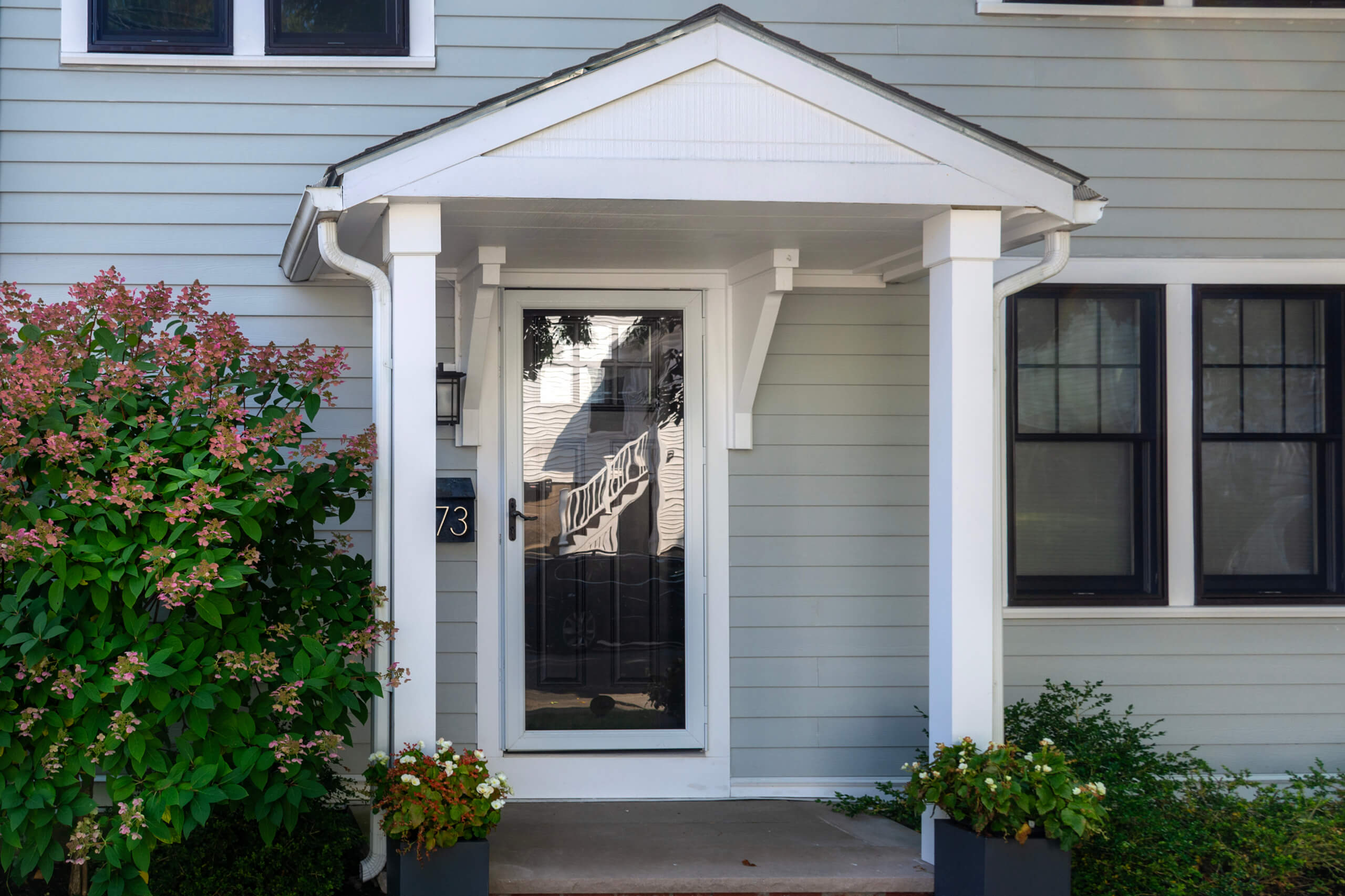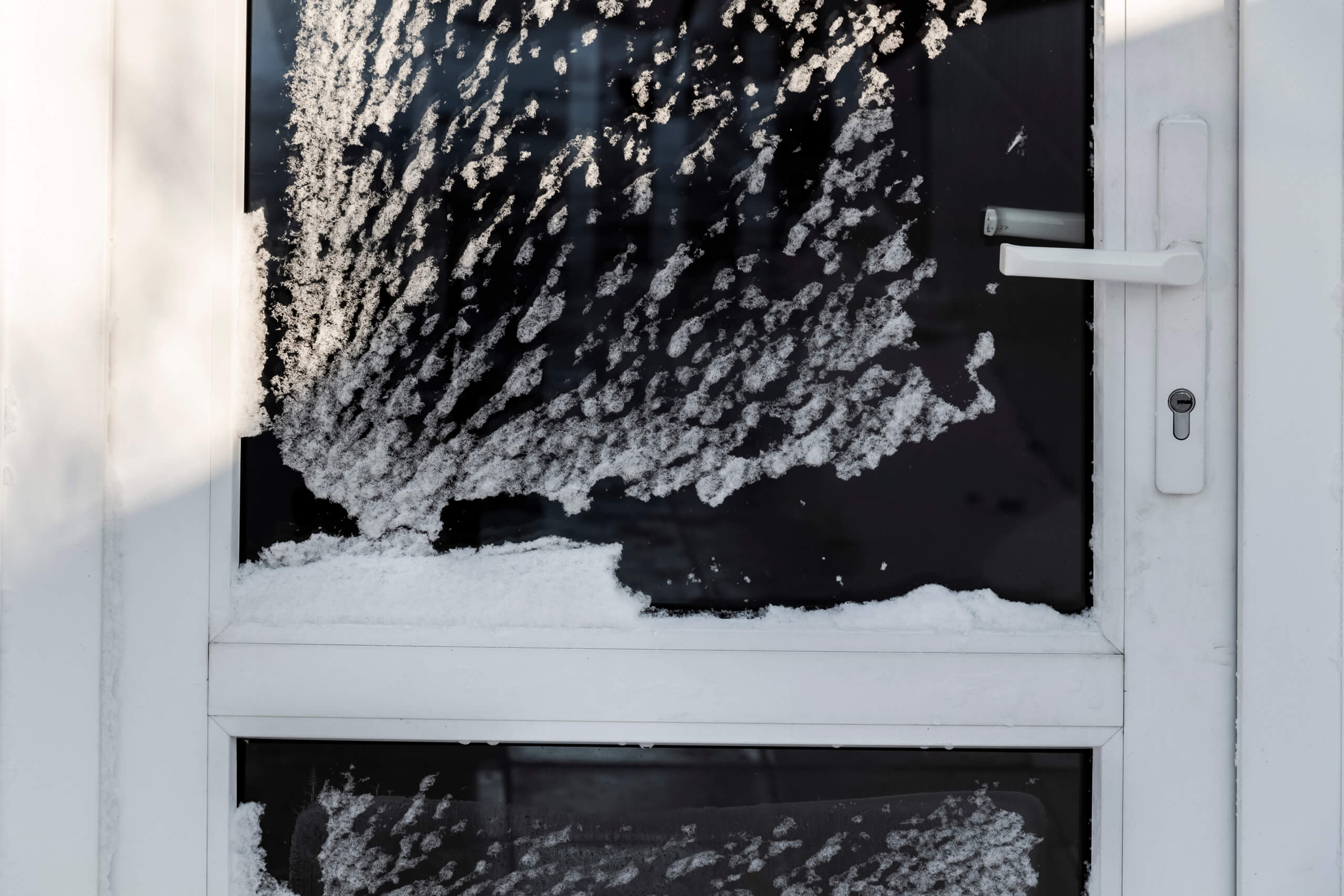If you’re a homeowner, especially in places with harsh winters like Saskatoon, you might have asked yourself: “Do I actually need a storm door?” The answer isn’t the same for everyone, but in many cases, storm doors can be a smart, practical addition to your home. Here’s everything you need to know.
What Is a Storm Door?
A storm door is a secondary, exterior door that is installed in front of your main entry door. Typically made of aluminum or steel with glass panels, they can also feature retractable screens for ventilation. Think of it as a protective barrier and bonus layer between your home and the outdoors.
Common features:
- Tempered glass or full-view glass panels
- Built-in or interchangeable screens
- Weatherstripping for insulation
- Locking mechanisms for added security

What Are Storm Doors Used For?
Storm doors serve multiple purposes:
- Weather Protection: They act as a shield against wind, rain, snow, and debris, helping protect your main entry door from damage and wear.
- Energy Efficiency: By creating an extra layer of insulation, storm doors help reduce heat loss in winter and keep cool air in during summer. While they don’t replace proper insulation, they can reduce drafts and air leaks, especially when your main door is older or less energy efficient.
- Ventilation: When equipped with a screen, you can leave your main door open and enjoy airflow without letting in bugs.
- Security & Visibility: With modern locking options and full-glass designs, you get an extra layer of security without sacrificing visibility.

Do You Need a Storm Door?
It depends on your home, lifestyle, and climate:
Yes, you likely do if:
- You live in a region with extreme weather
- Your main entry door is expensive or made of wood
- You want to improve your home’s energy efficiency
Maybe not necessary if:
- Your front door is already well-insulated and protected by a porch or overhang
- You have a newer fiberglass or steel entry door that seals well
In places like Saskatoon, where winters can be brutal and wind chill is no joke, a storm door often adds both comfort and durability to your home setup.
When Not to Install One
Storm doors aren’t always essential:
- They can trap heat in summer if not vented properly
- They may not match the modern aesthetic of some homes
- If your main entry door is leaky or poorly insulated, moisture can build up between the doors and cause condensation
How to Choose the Right Storm Door
- Climate Fit: Opt for insulated doors if you live in colder areas
- Glass or Screen Preference: Decide whether you want ventilation
- Material: Aluminum is lightweight and rust-resistant, steel is more durable
- Aesthetic: Match the door design to your home’s style
Quick FAQs
They can help. By reducing drafts and blocking direct wind or heat exposure, storm doors improve energy efficiency, especially when your main door is older or not well insulated.
Not always. If your main door is already well-insulated and protected, a storm door might not be needed, but it can still provide added durability and ventilation options.
No, a storm door includes glass for protection and insulation, while a screen door is typically used just for airflow and doesn’t provide weather protection.
Final Thoughts
Storm doors might seem like a minor addition, but they can play a major role in protecting your home, saving energy, and even adding curb appeal. If you’re in Saskatoon or anywhere with harsh seasonal changes, it’s worth considering one. Still unsure? Contact us for personalized recommendations, or request a quote to get started today.
